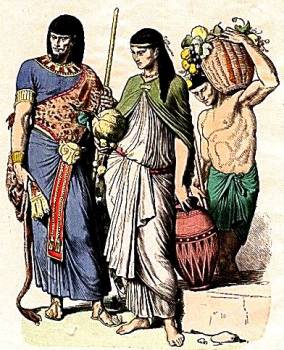Historical Monuments
 Egypt is also known for its historical monuments like the Giza pyramid complex and even the Egyptian civilization holds a lot of importance. Egypt is a country which has political and cultural significance for the Middle East. Egypt derived its English name from various sources like the French word Egypte, from Latin Aegyptus and ancient Greek Aigyptos. It was not essential for the Egyptian people to wear clothes as the climate was pleasant, unlike today’s Egypt. Despite this people did wear clothes and the clothing fashion basically remained the same throughout the Egyptian years until some changes were noticed in the New Kingdom. Light clothes were preferred by the Egyptian people because of the hot summers and mild winters.
Egypt is also known for its historical monuments like the Giza pyramid complex and even the Egyptian civilization holds a lot of importance. Egypt is a country which has political and cultural significance for the Middle East. Egypt derived its English name from various sources like the French word Egypte, from Latin Aegyptus and ancient Greek Aigyptos. It was not essential for the Egyptian people to wear clothes as the climate was pleasant, unlike today’s Egypt. Despite this people did wear clothes and the clothing fashion basically remained the same throughout the Egyptian years until some changes were noticed in the New Kingdom. Light clothes were preferred by the Egyptian people because of the hot summers and mild winters.
Egyptian Costumes Facts
There have been references indicating that even silk, though in small quantity was used. Animal skins like that of leopard were at times worn by priests and pharaohs when they were in the first servants of God.
Feathers were also used to ornament the ceremonial clothing of the Kings and Queens. Women manufactured the clothes from their homes. Linen was an essential textile made from Flax. It was even buried with people.
Clothes were primarily made from white linen. Egyptian men handled the initial stages of linen production by reaping the plant. The plants would then be beaten and combined to obtain the fibers which were later on spurned and followed by other stages. During this time, horizontal looms were in use but, vertical looms were used in the New Kingdom.
The Egyptian people also used wool. However, clothes made from wool were prohibited in the temples as they were made from animals. Egyptian people believed that wool should not touch the skin and so was made in that fashion.
However, the Egyptians did not use wool so often. Clothes were frequently hemmed to avoid fraying. Cotton was an unfamiliar fabric until the Coptic period.
Men wore loincloths or short skirts which reached just above their knees. These were made from a rectangular piece of linen which was tied around the waist with the help of a knot or a buckle. Women generally wore robes or tight dresses. Some of the dresses had some straps which concealed the breasts and the others exposed them.
However in Egyptian Costumes much depended on the fashion that was prevalent then. Children during the Egyptian time did not wear clothes until they reach adolescence. The clothes fashion was simple in the initial years of the Egyptian rule but it became complex at the fag end of the New Kingdom. Clothes pattern was determined by the occupation of a person.
Farmers wore short skirts while a poor person wore fewer clothes. The attire worn by people was completed with jewelry which decorated even the simplest of the clothes. People even wore wigs over their natural hair and were users of cosmetics. These cosmetics improved their features and were believed to contain hygienic and medicinal qualities.
The concept of tailored clothes was not known and people draped the clothes around their body. Pleating was the main form of embellishment used. The usage of colored clothes was seldom as dyes were difficult to fix in linen without using mordant. However, colored attires have been shown on tombs of the deceased. Only the rich or the Royals used woven textiles.